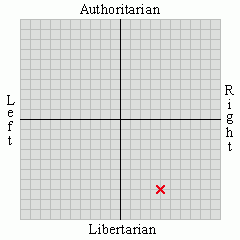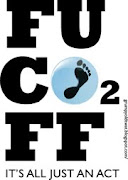Doomed from the sky itself.
 |
| Experts consulted by The Daily Mail agree on the level of doomedness. |
504,258 hits, that video's had. That's half a million people now utterly and quite correctly shit scared, unless of course they're all potheads watching the specks just going round and round and round and round and wow that music is just awesome, is there anything in the fridge?
And the thing is they really shouldn't be as terrified as The Wail suggests. Firstly there's scale. One of the things about the solar system is that while a lot of the things in it are either very large or very numerous the solar system itself is absofuckinglutelygibloodynormous. You don't get any sense of the scale from books. You simply can't. Even if it's a large book with a slice of the sun's surface and then the planets to scale they can't print a book big enough for you to see the space between it all. At best you'd have hundreds of empty pages between planets, and everyone will just thumb through until they get to the next one. Waste of paper. But what you can do is look online for instructions for scale models of the solar system and create something with perhaps an orange at one end of a sports field and a single grain of caster sugar at the other, or something like that. Or if it's a nice day and you live near a proper scale model of the solar system you could go and walk it. I have. There's one here in Melbourne at a scale of 1:1,000,000,000. They've got the sun down by St Kilda marina at about 1.4 metres across, and only about 60 metres away is the innermost planet, Mercury. I'll be bloody impressed if you can see it though, because to match scale with the 5ish foot diameter model sun the model of Mercury is only about 5mm. Venus (12mm) is nearly the same distance again and the fractionally larger Earth (12.8mm) is another 42m. We're now 150m from the model sun and Mars (6.7mm) is another 77m away. Jupiter, the last planet shown in the video, is 778m - about half a mile - from the model sun, and even at a more noticeable 14.3cm you'll be doing bloody well to see it or any of the others from where the sun is (incidentally, Jupiter's the last one in the St Kilda area - the rest are increasingly further apart and are found in other beach side suburbs between there and Port Melbourne).
Now look at the video again. The orbits look about right but the planets are awfully close to the size of the sun, and in turn those dots representing asteroids are way larger than scale as well. On my screen the sun is about 5mm and the asteroids, NEOS etc are about 1-1.5mm. If to scale it would be truly terrifying because all those specks would all be be two or three times the size of Jupiter. To get everything on the screen at the same scale as the sun in the middle even Jupiter would be half a millimetre across, while the largest object in the asteroid belt, Ceres (now upgraded to a dwarf planet and much bigger than almost everything else there) would be about 3.5 micrometres and could easily be hidden behind a blood cell, much less show up on the screen. The difference in size is important - a room with a hundred footballs in will feel crowded, but a room with a hundred thousand pollen grains in will feel empty. On the Melbourne scale we're probably talking about taking a little sand from St Kilda beach and chucking it on the pavement somewhere, while the video would look like three minutes of this:
 |
| The blue dot on the left is Jupiter. Nothing else shows up. |
And secondly, when was the last 'big one'? Stuff drops to earth every day, lots of it, but the fact the nearest motorway, freeway or highway to wherever you're reading this from probably does not need to bridge or skirt a big fucking crater the size of Hertfordshire is a good indication that the odds in any one human generation are actually rather good. Yes, there was a spectacular meteorite over Canada not long ago, and of course the Tunguska Event would have been bad news had it happened to a populated area. But it didn't, and even that wasn't a real biggie. Yes, the next 'big one' could hit tomorrow. But very probably it won't.
So thanks for the scary bedtime story, Mail, but I'm not going to lose any sleep over this one. Call me when you've heard that too much milk in my tea will make me grow squid tentacles on my face or whatever. Night night.
* I'm so sorry for that.



















6 comments:
This one (2003 UV11) is due to miss Earth by over a Million miles in October.
Then again, I tend to get my information from people who know what they're talking about rather than crap lamestream outfits like the Daily Fail.
They'd probably describe a million miles as 'Hair raising near miss by deadly giant asteroid' having little idea that it's four times the distance to the moon and most of these things would fit in an Ikea car park.
I love taking the Mainly Fail to bits on this sort of thing.
"They'd probably describe a million miles as 'Hair raising near miss by deadly giant asteroid'..."
And the 'Express' would describe it as 'Undocumented foreign object evades border controls'...
Heheheh, yeah. Taking jobs off of hard working British asteroids :-)
Here's a video which gives a very good idea of size and perspective in space.
http://www.youtube.com/watch?v=HEheh1BH34Q&feature=related
Hmmm, Vangelis. More stoner music? I've got some crisps if you want them.
Seriously, that's a good one. I'd heard of the Canis Majoris star (don't know what the VY stands for - is it like AA Milne or PJ O'Rourke or something?) but I hadn't really grasped how much bigger it is. Still, again it doesn't give any hint of the vast amount of space that is just space. Douglas Adams did better.
"It is known that there are an infinite number of worlds, simply because there is an infinite amount of space for them to be in. However, not every one of them is inhabited. Therefore, there must be a finite number of inhabited worlds. Any finite number divided by infinity is as near to nothing as makes no odds, so the average population of all the planets in the Universe can be said to be zero. From this it follows that the population of the whole Universe is also zero, and that any people you may meet from time to time are merely the products of a deranged imagination." - The Restaurant at the End of the Universe
Though I'm not sure about his thinking re infinite worlds and finite inhabited ones the point is there's a long way between anything much on on average intelligent life is found as infrequently in the universe as it is in the Big Brother house.
Post a Comment